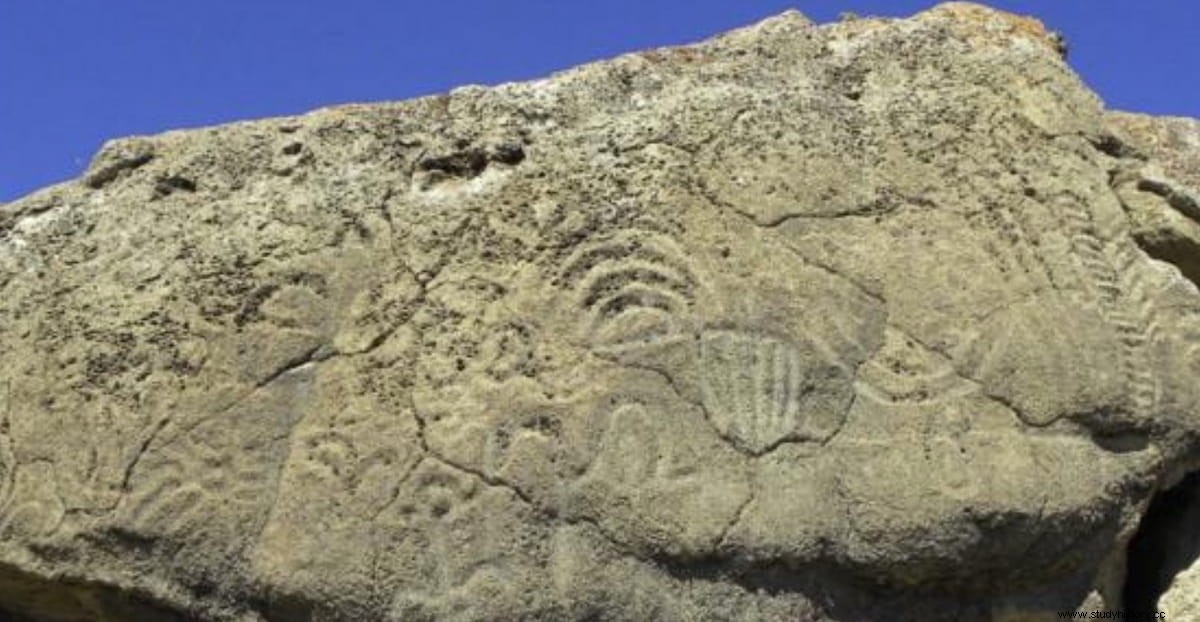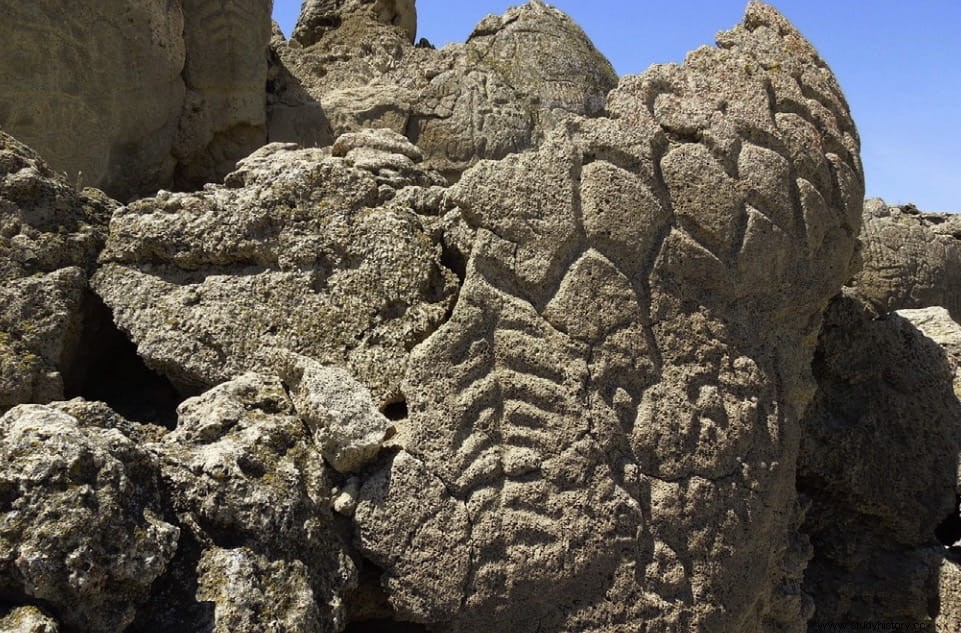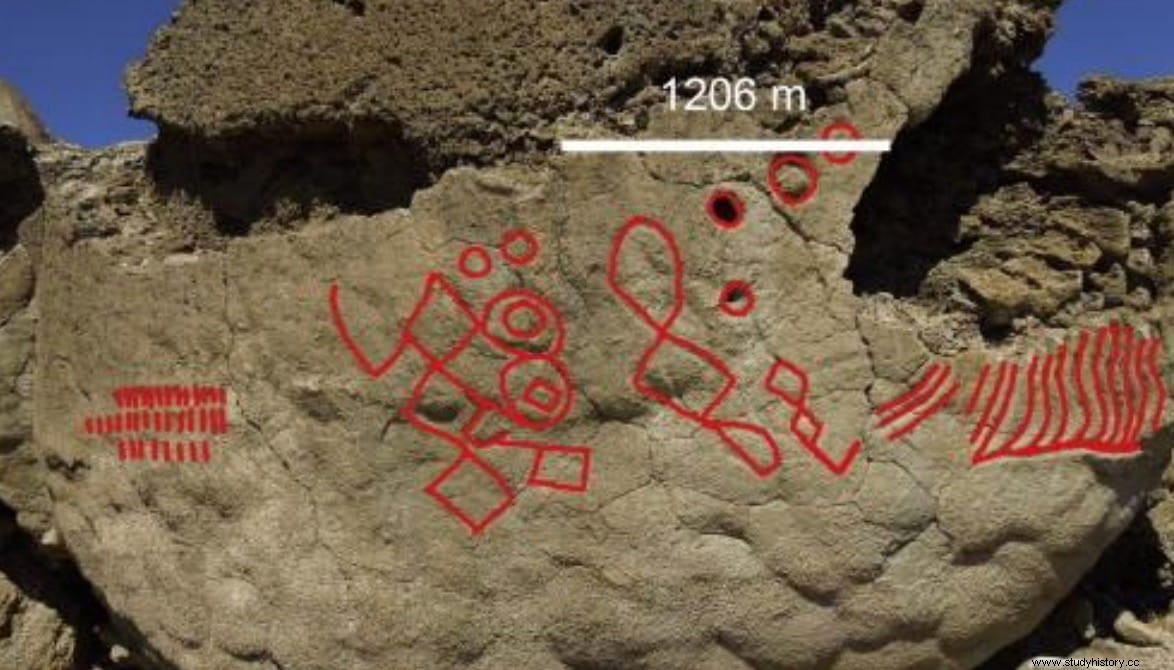On the Pyramid Lake Indian Reservation in northwestern Nevada, there were two adjoining lakes, one named after the reservation and the other Lake Winnemucca.
But the construction of the Derby Dam on the Truckee River in 1903 and State Highway 447 shortly thereafter (which blocked its connection to Pyramid Lake and its water supply) caused the latter to slowly dry up.
In 1936, a Migratory Bird Refuge was created on Lake Winnemucca. But the progressive loss of the water level ended up drying it up completely, and by 1962 the Refuge designation was eliminated.

Before that Lake Winnemucca was 45 kilometers long by 7 wide, although its depth was very low. Now, the lake bed is below the water level of the adjacent Pyramid Lake, and at an altitude of 1,150 meters above sea level.
The disappearance of the water revealed numerous petroglyphs that were first documented in 1992. Two years later, geochemist Larry Benson determined that the limestone in which they are engraved was deposited between 16,200 and 14,800 years ago.

A team from the University of Colorado, which also included Benson, analyzed the rise and fall of the lake's level over time using sediment cores from nearby Pyramid Lake. The goal was to establish a time window of when the lake level was low enough to allow access to the rocks, and thus date the time when the petroglyphs were made.
A more precise method would have required taking scrapings from the grooves of the petroglyphs, but was not authorized by the Paiute tribe, on whose land they are found. Analysis of the sedimentary core showed that the water level began to drop about 15,000 years ago, reaching a minimum about 13,300 years ago.
The coincidence of this method with the analysis and dating of the formation of algae and the lower carbonate crust of the lake, led the team to the conclusion that the rocks where the petroglyphs are found were above the water level for about 14,800 years. until 10,500 years ago.

That range of dates is consistent with the dating of human artifacts previously found in the area, and even matches the estimated age of the Spirit Cave mummy. , found nearby about 70 years ago.
Therefore, whether the petroglyphs are 14,800 years old or 10,500 years old, they turn out to be the oldest known in all of North America, with the oldest date corresponding to the estimated time of the first human migrations.

Petroglyphs consist of large grooves and dots that form simple motifs such as straight lines and swirls, alongside more complex ones that resemble trees, flowers, or the pattern of leaf veins.
Geometric patterns, such as diamonds or cubes, also appear. Neither human nor animal figures appear, and it has been suggested that they could represent meteorological symbols such as clouds and lightning.
The smallest engravings have a width of about 20 centimeters, while the largest reach almost a meter. The grooves are 1 or 2 centimeters deep, deeper than is usually found in petroglyphs in the southwestern United States.

It is unknown with what tools the petroglyphs were created, although one possibility is that a hard volcanic rock was used. Its meaning is also unknown.
